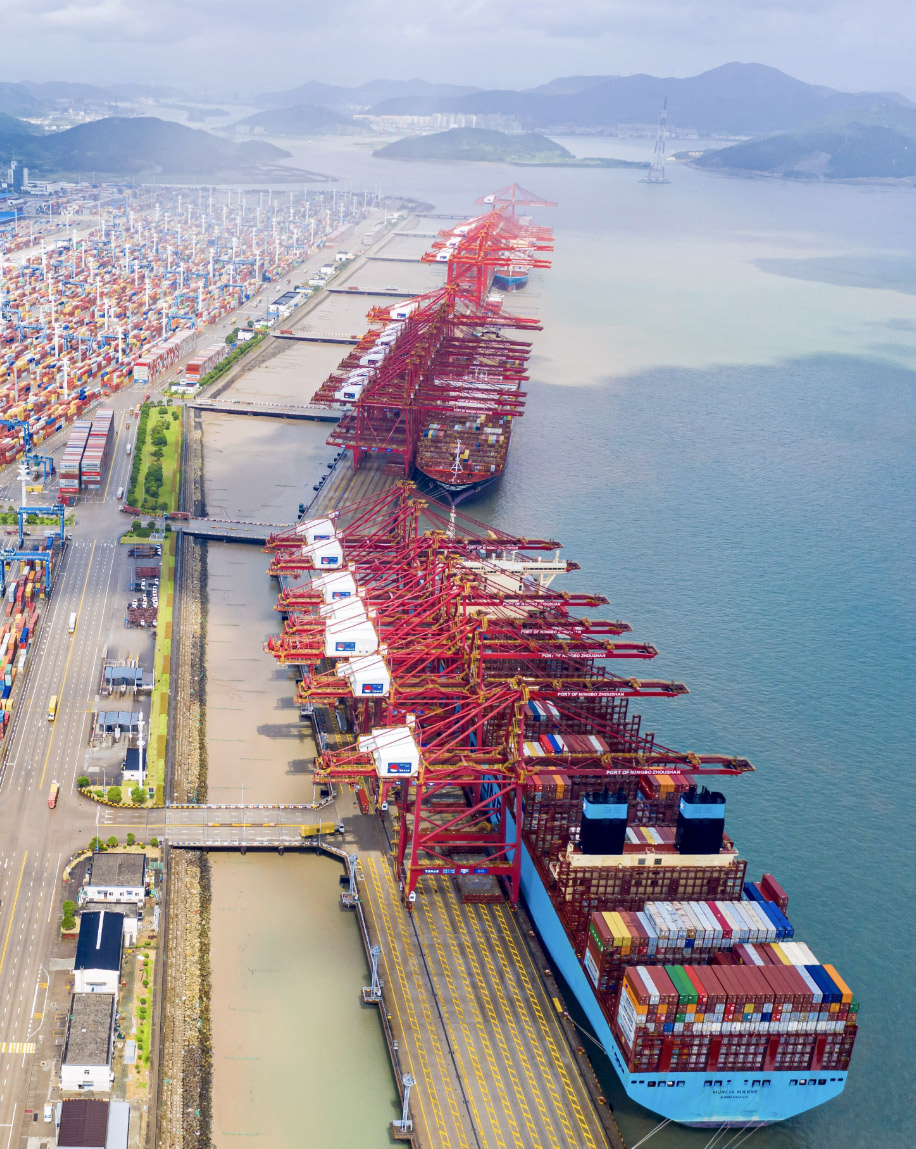

1. Ningbo Zhoushan Port (China)
○ Features: The world's largest cargo throughput (reaching 1.324 billion tons in 2023), connected to the Yangtze River Economic Belt, with a super large container terminal and intelligent loading and unloading system.
Advantages: transport hubs for iron ore, crude oil, coal and other bulk commodities, serving the "the Belt and Road" and the Yangtze River Delta Economic Circle.
2. Port of Singapore
Features: The world's busiest transit port, with a container volume of approximately 40 million TEUs in 2023, guarding the throat of the Malacca Strait.
Advantages: Efficient digital management, deep-water channels (over 13 meters), serving routes to over 180 countries worldwide.
3. Shanghai Port (China)
○ Features: Global container throughput champion (over 49 million TEUs by 2023), covering the Yangtze River Delta and the Yangtze River Basin.
Advantages: Intelligent terminal, ocean and inland waterway intermodal hub, serving over 500 ports worldwide.
4. Guangzhou Port (China)
○ Features: The largest comprehensive port in South China, with a cargo throughput of 675 million tons and a container capacity of 25.41 million TEUs in 2023.
Advantages: The linkage between inland rivers and seaports radiates to the Guangdong Hong Kong Macao Greater Bay Area, with access to over 400 international ports.
5. Qingdao Port (China)
Features: Gateway port in the Yellow River Basin, with a throughput of 657 million tons in 2023 and over 200 container shipping routes.
Advantages: Automated docks, deep-water berths, handling high value-added goods such as oil and ore.
6. Busan Port (South Korea)
○ Features: A key hub in Northeast Asia, with a container volume of over 30 million TEUs by 2023, serving 47% of South Korea's exported goods.
Advantages: Small tidal drop, natural sheltered harbor, connecting the three major global air routes.
7. Tianjin Port (China)
○ Features: Serve Beijing Tianjin Hebei and the "the Belt and Road". In 2024, 11.88 million TEU of containers will be delivered and 248 million tons of cargo will be handled.
Advantages: Multi port area collaboration (Northern/Eastern Xinjiang, etc.), green port pilot (shore power system).
8. Shenzhen Port (China)
○ Features: A global benchmark for container terminals, with a throughput of 11.05 million TEUs at Yantian Port in 2023, expanding new routes to Africa.
Advantages: The preferred port for ultra large vessels and a cross-border e-commerce logistics center.
9. Dubai Port (United Arab Emirates)
○ Features: Middle East transit trade center, with a container volume of 14.47 million TEUs in 2023, connecting the three continents of Asia, Europe, and Africa.
Advantages: Free trade policy, modern facilities, handling high value-added consumer goods and energy materials.
10. Port of Rotterdam (Netherlands)
○ Features: Europe's largest seaport, handling over 100 million tons of cargo annually, connecting the Rhine River with the North Sea route.
Advantages: Multi modal transportation hub (sea rail river), capable of handling bulk goods such as energy and chemicals.
● Asia:
Suzhou Port (China): The world's largest inland port and a hub for container transportation on the Yangtze River.
Colombo Port (Sri Lanka): an artificial port in the Indian Ocean, handling South Asian foreign trade goods.
Ho Chi Minh City Port (Vietnam): an emerging hub in Southeast Asia with a throughput of approximately 9.15 million TEUs in 2023.
● Europe:
Hamburg Port (Germany): a Nordic logistics center that handles high-value goods such as automobiles and consumer goods.
Valencia Port (Spain): The fifth largest port in the Mediterranean, specializing in manufacturing trade such as textiles and food.
● Americas:
New York New Jersey Port (USA): Gateway to the East Coast, handling North American imported consumer goods and energy.
Port of Los Angeles (USA): a container hub connecting the Pacific trade network to the western United States.
Africa:
Durban Port (South Africa): The busiest port in Africa, serving mineral exports from sub Saharan Africa.
1. Rise of Southeast Asia: Vietnam's Gaimei Port and Thailand's Linchaban Port compete for international transit business through infrastructure upgrades.
2. Green transformation: Hamburg, Rotterdam and other ports are promoting carbon neutrality goals and adopting shore power and hydrogen energy technologies.
3. Regional trade: Due to geopolitical factors, the demand for long haul routes between Asia and Europe has decreased, while the growth of regional short haul ports (such as Beibu Gulf ports) has accelerated.






